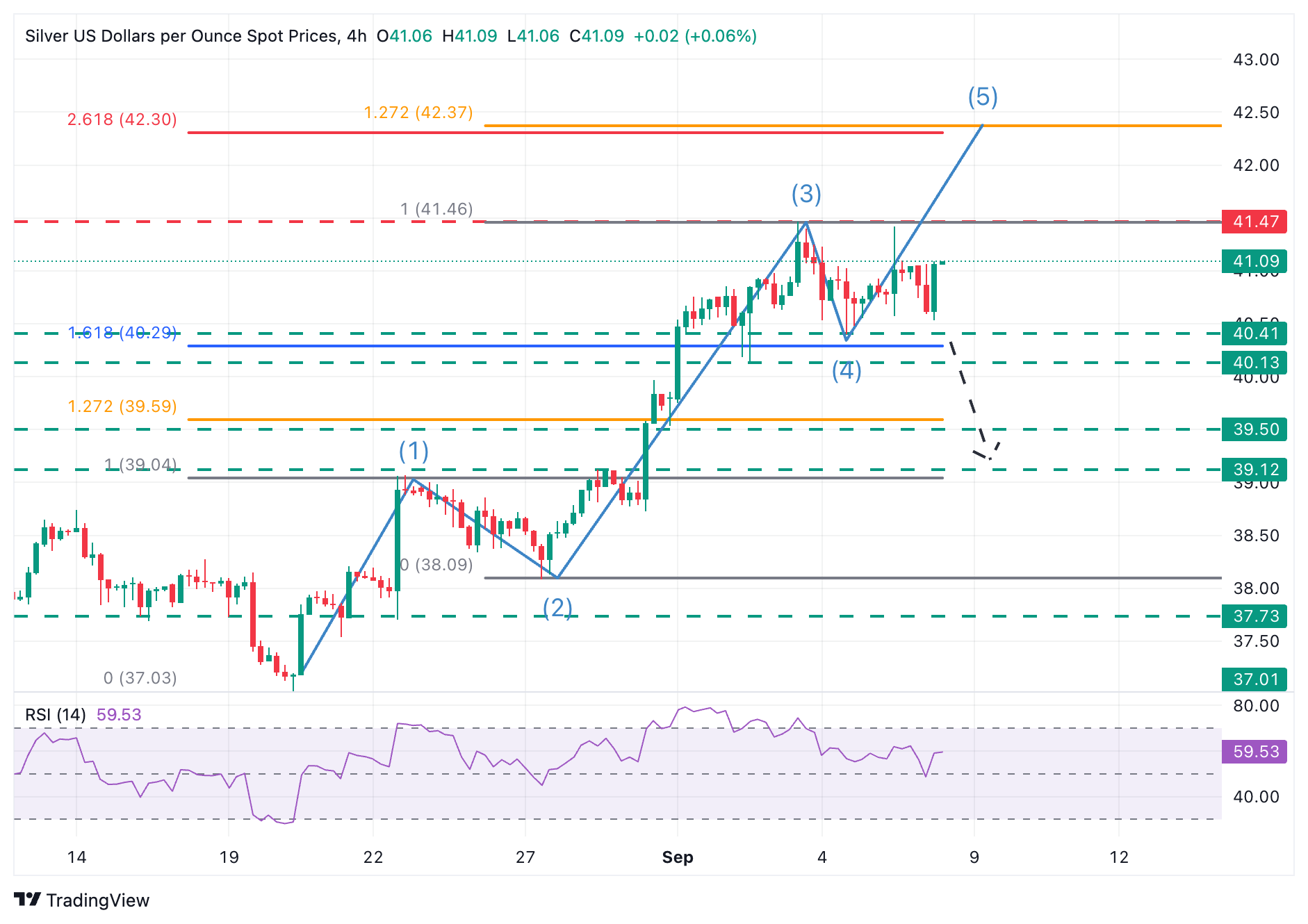Silver Price Forecast: XAG/USD has a strong support at $40.50
- Silver meets buyers at $40 50 and remains in range, with $41.45 high on sight.
- A softer US Dollar is providing support for precious metals on Monday.
- A potential double top at $41.45 migh be anticipating a deeper correction.
Silver (XAG/USD) has reversed losses after bouncing at $40.50 earlier on Monday, with price action returning to levels right above $41.00. The precious metal, however, remains within previous ranges, consolidating gains after a 10% rally in the previous two weeks.
Precious metals are drawing support from a weaker US Dollar on Monday, on the aftermath of another downbeat US Nonfarm Payroll’s reading that cemented expectations of Fed cuts next week, bringing the possibility of a jumbo cut back to the table.
Technical Analysis: Potential double top at $41.45

The technical picture shows a consolidation pattern, which has brought the 4-hour Relative Strength Index down from overbought levels. The support area around $40.50 is holding bears for now, but the double top at $41.45 area should act as a warning for bulls.
The pair is testing intra-day resistance at the $41,00 rea right now, ahead of the mentioned $41.45 area. A confirmation above here opens the door for the $42.30-$ 42.35 area, the 261.8% Fibonacci extension of the mid-August rally, which is a common target for Elliot Wave cycles.
To the downside, a break below $40.40 confirms the mentioned double top. Further down, the September 2 low, at $40.15, might hold bears ahead of the $39.50 intra-day level. The DT’s target is the August 29 low, near $39.10.
Silver FAQs
Silver is a precious metal highly traded among investors. It has been historically used as a store of value and a medium of exchange. Although less popular than Gold, traders may turn to Silver to diversify their investment portfolio, for its intrinsic value or as a potential hedge during high-inflation periods. Investors can buy physical Silver, in coins or in bars, or trade it through vehicles such as Exchange Traded Funds, which track its price on international markets.
Silver prices can move due to a wide range of factors. Geopolitical instability or fears of a deep recession can make Silver price escalate due to its safe-haven status, although to a lesser extent than Gold's. As a yieldless asset, Silver tends to rise with lower interest rates. Its moves also depend on how the US Dollar (USD) behaves as the asset is priced in dollars (XAG/USD). A strong Dollar tends to keep the price of Silver at bay, whereas a weaker Dollar is likely to propel prices up. Other factors such as investment demand, mining supply – Silver is much more abundant than Gold – and recycling rates can also affect prices.
Silver is widely used in industry, particularly in sectors such as electronics or solar energy, as it has one of the highest electric conductivity of all metals – more than Copper and Gold. A surge in demand can increase prices, while a decline tends to lower them. Dynamics in the US, Chinese and Indian economies can also contribute to price swings: for the US and particularly China, their big industrial sectors use Silver in various processes; in India, consumers’ demand for the precious metal for jewellery also plays a key role in setting prices.
Silver prices tend to follow Gold's moves. When Gold prices rise, Silver typically follows suit, as their status as safe-haven assets is similar. The Gold/Silver ratio, which shows the number of ounces of Silver needed to equal the value of one ounce of Gold, may help to determine the relative valuation between both metals. Some investors may consider a high ratio as an indicator that Silver is undervalued, or Gold is overvalued. On the contrary, a low ratio might suggest that Gold is undervalued relative to Silver.

